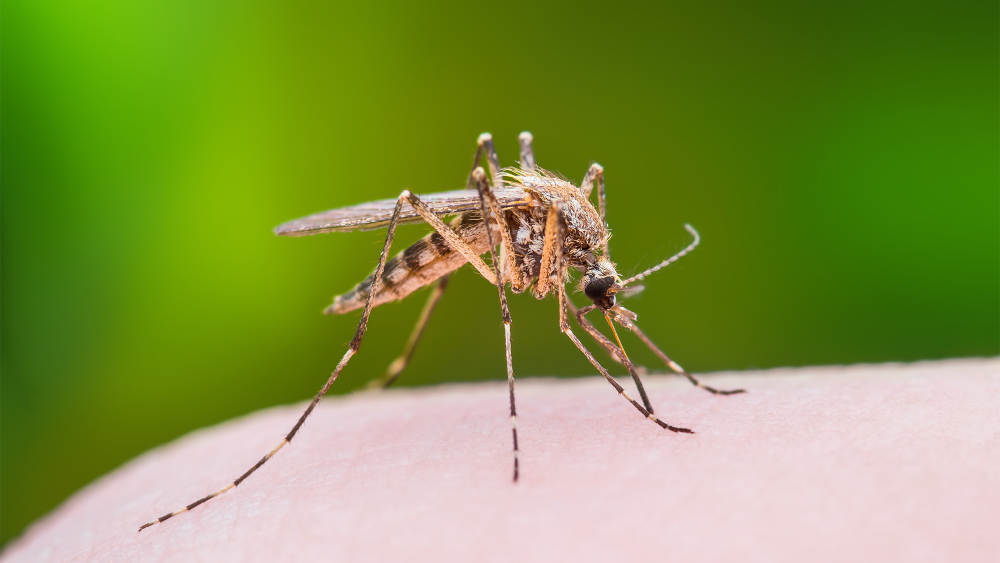
A team of researchers are investigating strategies to overcome mosquito-borne illnesses by introducing a self-eliminating mechanism, or biodegradable genetic modification, into a mosquito population. |
Image: Getty Images
A team of researchers, including Dr. Madhav Erraguntla, Dr. Mark Lawley, Dr. Josef Zapletal and Dr. Neda Najmitabrizi from the Wm Michael Barnes ’64 Department of Industrial and Systems Engineering at Texas A&M University, are investigating strategies to overcome mosquito-borne illnesses by introducing a self-eliminating mechanism (SEM), or biodegradable genetic modification, into a mosquito population.
This research will provide a pathway for designing gene drives that can be safely transitioned for evaluation in the field and will permit rigorous field-based testing of gene drives by establishing strict time limits on the existence of gene drive transgenes in nature.
In this research, Lawley and Erraguntla, in collaboration with Dr. Zachary Adelman and Dr. Kevin Myles and their students from the Department of Etymology, develop partial-differential equations-based mathematical models to characterize the effectiveness of SEM for reversion of gene drive transgenes.
“This research allows us to safely test and deploy genetic manipulations, and in the long-term, control of vector borne diseases,” Erraguntla said.
The published research can be found in Philosophical Transactions of the Royal Society B.
Gene drive systems have long been sought to modify mosquito populations, and thus combat vector-borne diseases such as malaria, the Zika virus and dengue fever.
The goal with the SEM is for the modified gene to disappear after a few generations given the size of a mosquito network. Then, the mosquito genetic code can return to what it was prior to the modification. It is important to make this change biodegradable so the effects are only temporary and can be evaluated in the field.
The mosquito in question is the Aedes aegypti, the species known for carrying yellow fever and the Zika virus. This species was chosen because it is one of the main vectors of these potentially deadly infections.
“This research provides the scientific evidence for policy makers to have the confidence that gene drive systems can be safely deployed in the field without risks of unintended consequences,” Lawley said.
Powerful gene drive systems have been developed in laboratory experiments, but may never be used in practice unless they can be shown to be acceptable through rigorous field-based testing. Such testing is complicated by the risk of unintended consequences and the difficulty in removing gene drive transgenes from nature. Inclusion of SEM into the design of transgenes provides a mechanism for safe excision of transgenes.
To achieve creating a SEM, a set of models, or differential equations, were developed that were then simulated under different scenarios, including temperature and rainfall, and hatching and life cycle. Once the genetic modifications were created, then began the experimentation process through different gene designs.
The models suggest that even at a modest rate of success, configurations of SEM can provide temporal and spatial control and will result in reversion of gene drive transgenes.
Involvement from industrial and systems engineers is crucial because of the systemic modeling involved with gene design, as well as having that gene be biodegradable. The systemic modeling involved in making genetic changes biodegradable can also be applied in other domains such as health care systems and transportation.
This research will provide a pathway for designing gene drives that can be safely transitioned for evaluation in the field and will permit rigorous field-based testing of gene drives by establishing strict time limits on the existence of gene drive transgenes in nature.
In this research, Lawley and Erraguntla, in collaboration with Dr. Zachary Adelman and Dr. Kevin Myles and their students from the Department of Etymology, develop partial-differential equations-based mathematical models to characterize the effectiveness of SEM for reversion of gene drive transgenes.
“This research allows us to safely test and deploy genetic manipulations, and in the long-term, control of vector borne diseases,” Erraguntla said.
The published research can be found in Philosophical Transactions of the Royal Society B.
Gene drive systems have long been sought to modify mosquito populations, and thus combat vector-borne diseases such as malaria, the Zika virus and dengue fever.
The goal with the SEM is for the modified gene to disappear after a few generations given the size of a mosquito network. Then, the mosquito genetic code can return to what it was prior to the modification. It is important to make this change biodegradable so the effects are only temporary and can be evaluated in the field.
The mosquito in question is the Aedes aegypti, the species known for carrying yellow fever and the Zika virus. This species was chosen because it is one of the main vectors of these potentially deadly infections.
“This research provides the scientific evidence for policy makers to have the confidence that gene drive systems can be safely deployed in the field without risks of unintended consequences,” Lawley said.
Powerful gene drive systems have been developed in laboratory experiments, but may never be used in practice unless they can be shown to be acceptable through rigorous field-based testing. Such testing is complicated by the risk of unintended consequences and the difficulty in removing gene drive transgenes from nature. Inclusion of SEM into the design of transgenes provides a mechanism for safe excision of transgenes.
To achieve creating a SEM, a set of models, or differential equations, were developed that were then simulated under different scenarios, including temperature and rainfall, and hatching and life cycle. Once the genetic modifications were created, then began the experimentation process through different gene designs.
The models suggest that even at a modest rate of success, configurations of SEM can provide temporal and spatial control and will result in reversion of gene drive transgenes.
Involvement from industrial and systems engineers is crucial because of the systemic modeling involved with gene design, as well as having that gene be biodegradable. The systemic modeling involved in making genetic changes biodegradable can also be applied in other domains such as health care systems and transportation.